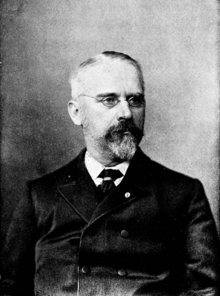Portal:Pennsylvania
The Pennsylvania Portal Pennsylvania (/ˌpɛnsɪlˈveɪniə/ PEN-sil-VAY-nee-ə, lit. 'Penn's forest country'), officially the Commonwealth of Pennsylvania (Pennsylvania Dutch: Pennsylvanie), is a state spanning the Mid-Atlantic, Northeastern, Appalachian, and Great Lakes regions of the United States. It borders Delaware to its southeast, Maryland to its south, West Virginia to its southwest, Ohio and the Ohio River to its west, Lake Erie and New York to its north, the Delaware River and New Jersey to its east, and the Canadian province of Ontario to its northwest. Pennsylvania was founded in 1681 through a royal land grant to William Penn, the son of the state's namesake. Prior to that, between 1638 and 1655, a southeast portion of the state was part of New Sweden, a Swedish Empire colony. Established as a haven for religious and political tolerance, the colonial-era Province of Pennsylvania was known for its relatively peaceful relations with native tribes, innovative government system, and religious pluralism. Pennsylvania played a vital and historic role in the American Revolution and the ultimately successful quest for independence from the British Empire, hosting the First and Second Continental Congress, leading to the adoption of the Declaration of Independence and the formation of the Continental Army. On December 12, 1787, Pennsylvania became the second state to ratify the U.S. Constitution. The bloodiest battle of the American Civil War, at Gettysburg over three days in July 1863, proved the war's turning point, leading to the Union's preservation. Throughout the late 19th and 20th centuries, the state's manufacturing-based economy contributed to the development of much of the nation's early infrastructure, including key bridges, skyscrapers, and military hardware used in U.S.-led victories in World War I, World War II, and the Cold War. Pennsylvania's geography is highly diverse. The Appalachian Mountains run through the center of the state; the Allegheny and Pocono mountains span much of Northeastern Pennsylvania; close to 60% of the state is forested. While it has no ocean shoreline, it has 140 miles (225 km) of waterfront along Lake Erie and the tidal Delaware River. (Full article...) This is a Featured article, which represents some of the best content on English Wikipedia..
 Oliver Christian Bosbyshell (January 3, 1839 – August 1, 1921) was Superintendent of the United States Mint at Philadelphia from 1889 to 1894. He also claimed to have been the first Union soldier wounded by enemy action in the Civil War, stating that he received a bruise on the forehead from an object thrown by a Confederate sympathizer while his unit was marching through Baltimore in April 1861. Bosbyshell was born in Mississippi. His parents were of old Philadelphia stock, and he was raised in Schuylkill County, Pennsylvania. After briefly working on the railroad and then studying law, Bosbyshell enlisted in the Union cause on the outbreak of war. Following a brief period of service in the 25th Pennsylvania Volunteer Regiment, he joined the 48th Pennsylvania, remaining in that regiment for three years. He saw action in such battles as Second Bull Run and Antietam. He rose to the rank of major and led his regiment, but was mustered out upon the expiration of his term of service in October 1864, having been refused a leave of absence. (Full article...)Selected geography article -Harrisburg (/ˈhærɪsˌbɜːrɡ/, Pennsylvania German: Harrisbarrig) is the capital city of the U.S. commonwealth of Pennsylvania and the seat of Dauphin County. With a population of 50,099 as of 2020, Harrisburg is the ninth-most populous city in Pennsylvania. It is the larger principal city of the Harrisburg–Carlisle metropolitan statistical area, also known as the Susquehanna Valley, which had a population of 591,712 in 2020 and is the fourth-most populous metro area in Pennsylvania. Harrisburg is situated on the east bank of the Susquehanna River and is located 83 miles (134 km) southwest of Allentown and 107 miles (172 km) northwest of Philadelphia. Harrisburg played a role in American history during the Westward Migration, the American Civil War, and the Industrial Revolution. During part of the 19th century, the building of the Pennsylvania Canal and later the Pennsylvania Railroad allowed Harrisburg to develop into one of the most industrialized cities in the Northeastern United States. In the mid- to late 20th century, the city's economic fortunes fluctuated with its major industries consisting of government, heavy manufacturing, agriculture, and food services. These economic fluctuations contributed to Harrisburg experiencing a decline of nearly half its population between 1950 and 2000. However, the region is seen as financial stabile in part due to the high concentration of state and federal government agencies. (Full article...)Selected image - Credit: Phillyfan0419 Citizens Bank Park is a 43,647-seat baseball-only stadium and home to the Philadelphia Phillies. Did you know -
Related portalsWikiprojectsThis is a Good article, an article that meets a core set of high editorial standards.
 The Philadelphia Phillies' 2014 season was the 132nd in the history of the franchise. After a disappointing 2013, the Phillies entered the offseason with a strategy to reload rather than rebuild; they did not want to relinquish the opportunity to do well in 2014 in hopes of being competitive down the road. Commensurate with this strategy, among their key acquisitions were right fielder Marlon Byrd and starting pitcher A. J. Burnett. The Phillies began the season with new coaches (as Ryne Sandberg entered his first season as manager after taking over on an interim basis in August 2013) and new broadcasters: Jamie Moyer and Matt Stairs, two members of the 2008 World Series squad, replaced Chris Wheeler and Gary Matthews as analysts on Comcast SportsNet Philadelphia. After offseason headlines indicated a tenuous relationship between Sandberg and shortstop Jimmy Rollins and controversy about draft picks who did not sign with the team, the season began auspiciously with an opening-day win. However, the Phillies then lost their next two games. April continued in that fashion; the team played .500 ball in their first 26 games, exceeding expectations. One commentator called them "pleasantly mediocre", despite a horrific performance from the bullpen. May was a frustrating month for the Phillies; failing to win games they were in a position to win, they posted an 11–16 record and a .230 team batting average (the worst in the National League). June was almost as bad; although the team had 12 wins and 17 losses, the bullpen improved to one of the best in the NL. In the 2014 Major League Baseball draft that month the Phillies selected Aaron Nola as their first-round pick, encouraging optimism from fans and the media. Although the Phillies began July at the bottom of the National League East Division, they amassed a five-game winning streak shortly before the All-Star break. This moved them to within nine games of .500, but they lost the last two games and had a 42–53 record at the break. (Full article...)Selected article -The Pennsylvania Railroad (reporting mark PRR), legal name The Pennsylvania Railroad Company, also known as the "Pennsy", was an American Class I railroad that was established in 1846 and headquartered in Philadelphia. It was named for the commonwealth in which it was established. At its peak in 1882, the Pennsylvania Railroad was the largest railroad (by traffic and revenue), the largest transportation enterprise, and the largest corporation in the world. Over its existence, Pennsylvania Railroad acquired, merged with, or owned part of at least 800 other rail lines and companies. At the end of 1926, it operated 11,640.66 miles (18,733.83 kilometers) of rail line; in the 1920s, it carried nearly three times the traffic as other railroads of comparable length, such as the Union Pacific and Atchison, Topeka & Santa Fe railroads. Its only formidable rival was the New York Central Railroad (NYC), which carried around three-quarters of the Pennsy's ton-miles. (Full article...)Pennsylvania news
CategoriesState factsState Facts
State symbols
Pennsylvania topicsGeneral imagesThe following are images from various Pennsylvania-related articles on Wikipedia.
Associated WikimediaThe following Wikimedia Foundation sister projects provide more on this subject:
Discover Wikipedia using portals |
































































